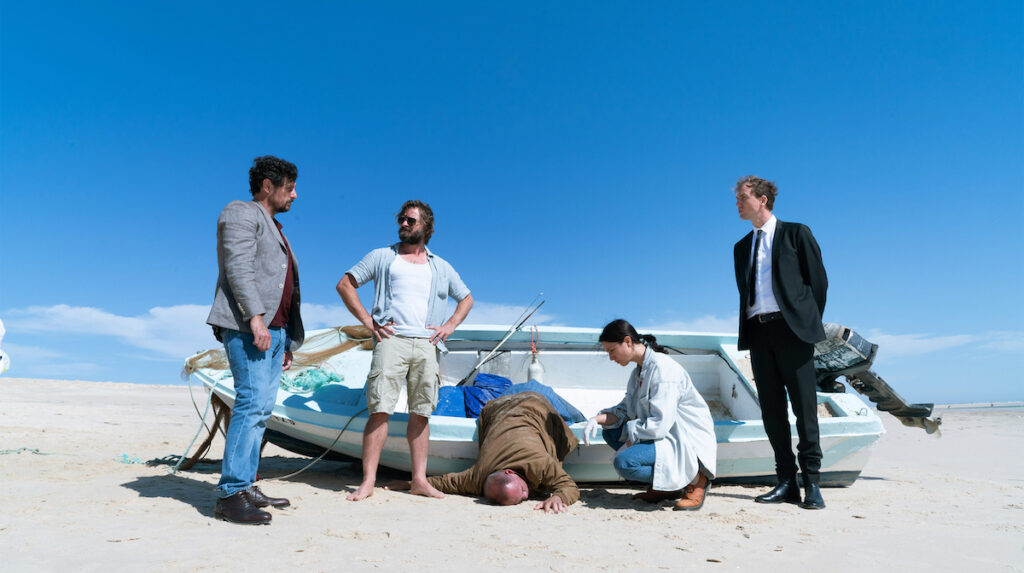Opinion: Why ‘light crime’ is arresting audiences in Germany and beyond
With German audiences increasingly tuning in to more upbeat, less violent, crime programming, Kerstin Grünwald, director of international sales at Hamburg-based distributor OneGate Media, considers what’s behind the trend and why such content is currently a good choice for broadcasters.
Crime stories have, in recent years, dominated the slates of most of the major streamers and broadcasters, with true crime and crime dramas rapidly becoming a top choice of entertainment for audiences around the world. From Dahmer on Netflix, to Blue Lights on the BBC, and countless more, the appetite for crime entertainment is global and ever-growing.
As a German PSB (ARD) subsidiary responsible for content distribution, we’ve quietly observed the proliferation of another strand of the crime content wave – the popularity of ‘light’ crime drama has rocketed in the last few years. These are – as the name would describe – the lighter scripted and non-scripted series and films centered around crime-related and crime-adjacent stories, focusing on police work, investigations, and likeable (and unlikeable) characters.
Essentially this is the crime-related content that works for pre-watershed audiences (think Border Force and Midsomer Murders). These are naturally more flexible for scheduling and can make for an obvious choice for daytime and early evening slots.
This current demand can be observed not only in the German market as it is shaping its current TV landscape, but also in the various international markets of our partners and clients. There are several key factors that contribute to this demand for light crime content.
Escapism in the midst of modern turmoil:
With the news confronting us with daily challenges and crises around the world, escaping to a fictional crime story that’s about characters and situations outside our reality is an entertaining relief from the real world. Light crime scripted entertainment combines suspenseful crime-related stories with varied subplots and relatable but intriguing, and ultimately likeable, characters.
These offer a unique blend that provides both entertainment and exhilaration. Audiences are invited to immerse themselves into a totally fictious world, where they still enjoy the suspense and thrill of lighter crime stories, without the often-taxing gruesome scenes in true crime series and heavy crime dramas.
Non-scripted light crime content tends to document tense legal situations but with the relief of profiling the real characters like the law-enforcement teams in everyday situations, humanising them but keeping the pace up. There’s still the element of suspense, but this is built through more palatable plotlines.
Likeable but flawed characters:
Light crime series and films stand out from other popular crime stories such as Dahmer or the huge number of true crime documentaries on Netflix, as they tend to explore the protagonists’ character and journey throughout the series in more depth. In heavier crime series, much of the character’s thoughts, relationships and traits are uncovered while they’re committing major crimes (Dahmer, Dexter, Mindhunter, Wolf). The typical light crime series will introduce a protagonist to the audience, and slowly delve deeper into the motivations and distinct features of the character, so that they can build a better understanding and compassion for them with each episode. Part of the appeal of all six seasons of Line Of Duty, for example, is the evolution of the characters and their relationships, as they carry out their work in the police force. The development of more complex – and less gory – characters is as entertaining as seeing the crimes play out.
Episodic cohesiveness and accessibility:
Also critical to the genre’s success is the commitment to production value. In addition, the daytime nature of light crime content can appeal to viewers at any time. This contrasts with traditional crime shows, which often air in prime time, and demonstrates the versatility of light crime to adapt to different viewing times and preferences, and for it to travel and feel more universal for daytime audiences.
The episodic structure that characterises light crime narratives also plays a crucial role in the series’ popularity. Each episode follows its own narrative arc, where a satisfying conclusion is often found at the end (true for both the Border Force and Midsomer Murders). Light crime’s compatibility with television programming allows broadcasters to seamlessly incorporate episodes into demanding or tricky schedules, ensuring consistency, flexibility, and the possibility of repeats.
Success in access and primetime:
As well as daytime, the genre’s triumphant success extends to both early evening and primetime programming. The long-running German hit Murder In The North (aka Morden Im Norden) has become a fixture in ARD’s early evening programme, with nine seasons, which underlines the versatility of the genre. In addition, the light crime series Vet Jacobs – Agent On Occasion has achieved a remarkable market share of 27% in primetime.
At OneGate Media, we have seen a 60% increase in revenue within this genre, and we’ve made a commitment to expanding the light crime portfolio with additional access – and primetime series like Lost In Fuseta and Justice For All.
The rise of the light crime genre in Germany is a testament to its offering to audiences as relief from heavier crime stories (both on screen and in the real world), a commitment to more universally-appealing and accessible character development, its blend of suspense and empathy, top-tier production values, accessibility, and its episodic (returnable) structure.
Light crime has truly become a cornerstone of German television and continues to be integral to broadcasting schedules across the world too. The genre’s success is underscored by its remarkable revenue growth, a testament to its resonance within the German audience, and beyond.






